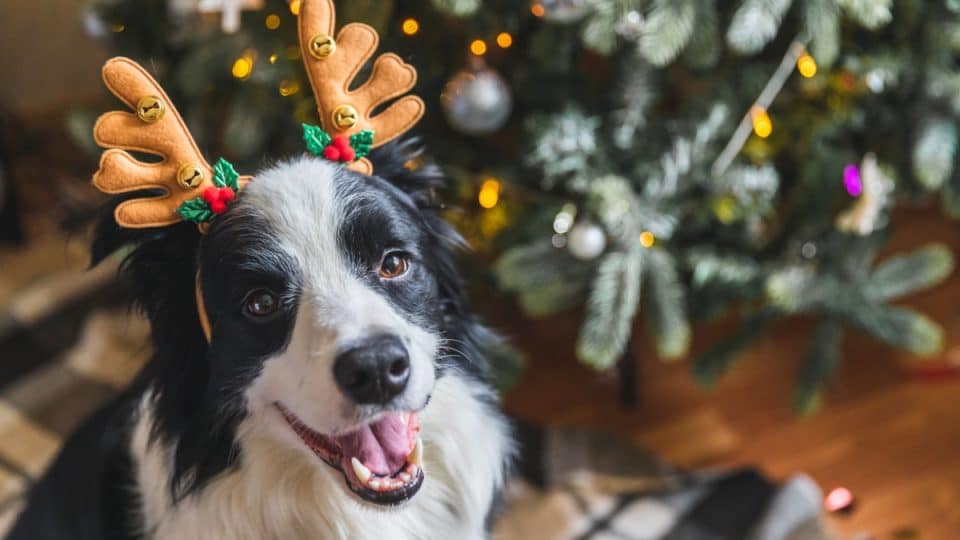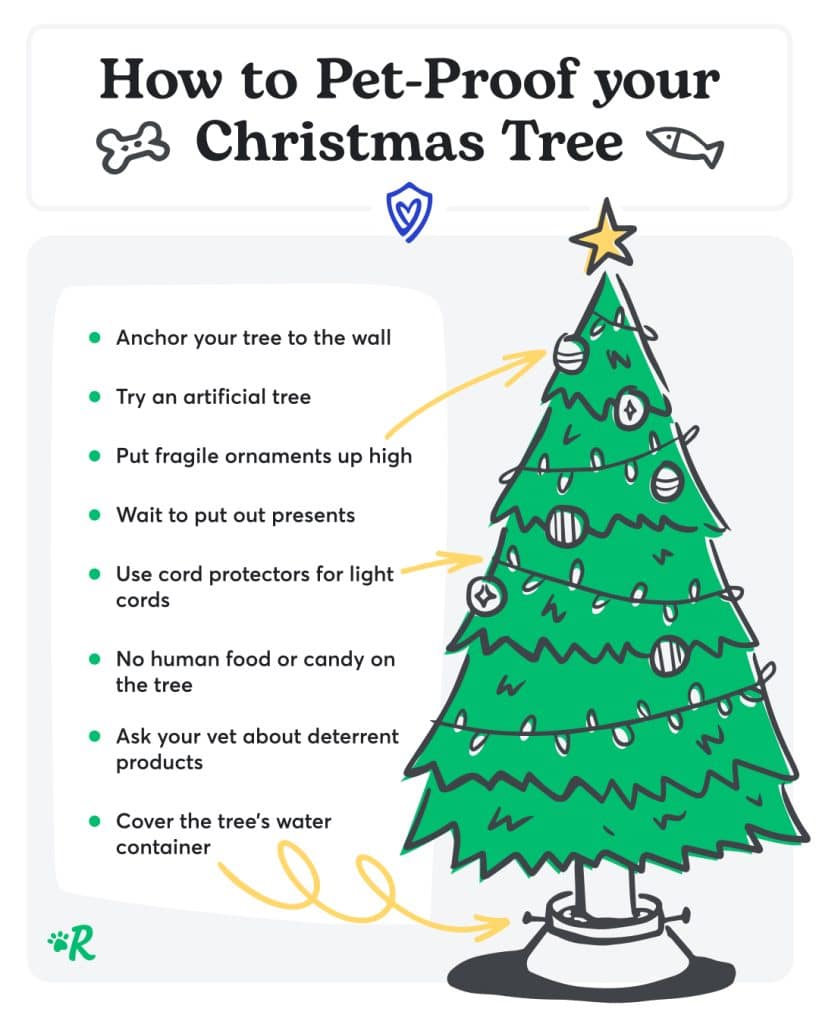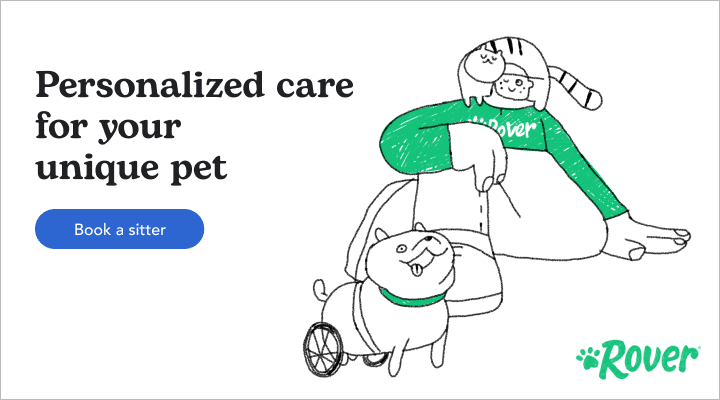- This post contains affiliate links. Read more here.
- Not a substitute for professional veterinary help.
Nothing makes a cuter holiday picture than your dog posed in front of the Christmas tree. But dogs and Christmas trees aren’t always the perfect mix. Trees decorated with breakable ornaments and electric lights pose hazards to dogs, and curious dogs can be severely injured if they knock over the tree (not to mention your poor tree)!
Don’t worry: you can still have a Christmas tree! You just need to take some precautions. Read on to learn how to keep your dog safe around the Christmas tree (and vice versa).
1. Consider Artificial Trees and Plants First
Holly, mistletoe, poinsettias: these common holiday houseplants are potentially toxic to dogs. If you decorate with any of them, keep them way out of reach of your pets. Better yet, look for pet-safe alternatives. Artificial versions can be just as lovely, and a lot safer for your dog. They also don’t carry small bugs nests home. If you are picking up a Christmas tree from a lot nearby, chances are spiders and other crawlers will be coming home with you too.
While pine needles aren’t particularly toxic, they are small and sharp, and can cause injury in your dog’s mouth and intestines. If you have a natural Christmas tree, be sure to sweep up fallen needles every day.
2. Anchor Your Tree
Christmas movies use tipped-over trees as a comedic device, but there’s nothing funny about a falling tree indoors. Invest in a quality stand to secure the base of the tree. To prevent possible injury to curious pets, place the Christmas tree in a corner and securely anchor it to the ceiling or wall.
To anchor your tree, loop some fishing line around the trunk and tie it to an anchor, such as a molly bolt, in the wall behind it. You can also tie the line around the top of the tree and tie it to a screw in the ceiling. This will keep the tree from tipping over if a rambunctious dog gives it a bump.
You can also create an “alarm” to alert you if the tree is in danger: simply place aluminum foil or a can filled with beans on the tree’s bottom limbs. If your dog starts nosing around the tree, you’ll hear it in time to intervene.
3. Start With a Bare Tree
Before you decorate the tree, leave it up for a few days. This will help your dog get used to having a tree in the house, so they’ll be more likely to leave it alone once it’s covered in lights and baubles.
After a few days with a bare tree, chances are your dog will lose interest entirely!
4. Be Wary of Electrical Cords
Bright, shiny lights are hard to resist, but they can be dangerous to your dog. Not only can your dog get tangled in the wires, but if she’s a chewer, there’s a risk of electrical shock. If you put lights on a Christmas tree, leave the bottom branches bare.
You should also secure cords leading to and from the tree. Hide cords with the tree skirt or decorative package, or use adhesive-backed cord clips to keep them off the floor and out of reach.
5. Put Fragile Ornaments on Higher Branches
Your big, happy dog with her big, wagging tail can be lethal to delicate Christmas decorations. Broken decorations may be a choking hazard, or cause paw or mouth injuries.
To keep your family heirlooms safe, and protect your dog from broken glass, put fragile ornaments towards the top of the tree, or switch to plastic, felt, or wood ornaments. Depending on how rambunctious and curious your dog is, you may want to leave the bottom third of the tree bare.
6. No Food on the Tree
Popcorn garlands, cookie ornaments, and candy canes, oh my! Holiday treats make beautiful decorations, but they’re a no-no for dogs. Leave the popcorn for eating, and try a dog-friendly paper garland on the tree instead.
Put the chocolate away, too; it’s among the most dangerous foods for dogs. During the holiday season, it’s important to keep candy completely out of reach of your dog—which may mean leaving it off the tree.
7. Candles? Keep ’em Up High and Off the Tree
Candlelight makes the holidays cozy and bright, but open flames and dogs don’t mix. Aside from the fire hazard of having a candle close to the Christmas tree, flickering candlelight is hard to resist.
If you’re decorating with candles, place them on secure shelves well out of reach of your dog. To get that flickering glow effect on the Christmas tree, try clip-on LED candles.
8. Save the Presents for Christmas Morning
Sometimes it’s not a matter of dogs and Christmas trees, but dogs and what’s under the tree. My family has had more than one incident in which a dog ate a present.
To keep your Christmas gifts safe, and protect your dog from ingesting something she shouldn’t, don’t leave presents under the tree. Wait for Santa to come on Christmas Eve, and wake up to gifts that the dog hasn’t chewed.
Christmastime is extra-special with a dog. By following our tips for Christmas tree safety, you can make sure the holiday is happy and bright for you and your best friend!




